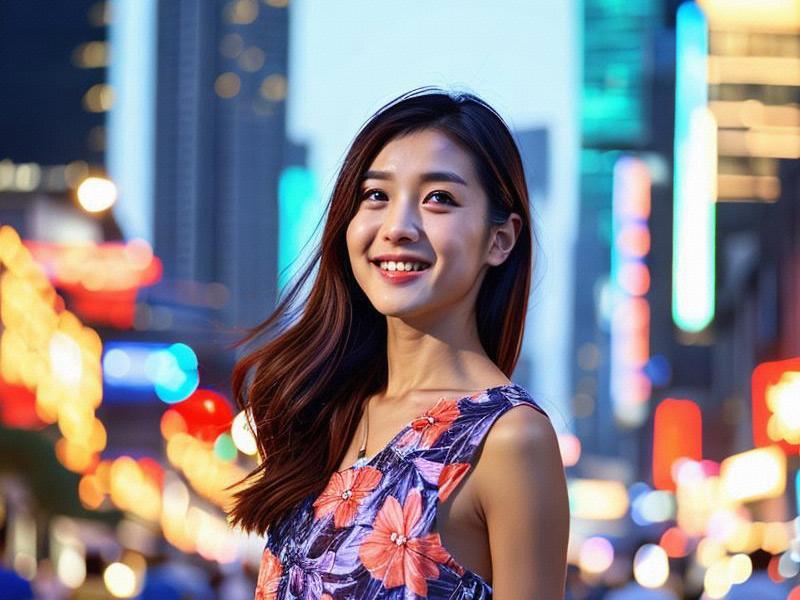This article delves into the unique cultural phenomenon of "Shanghai Beauties," exploring their historical roots, evolution, and influence on modern Shanghai's fashion, art, and society.

In the heart of China's bustling metropolis, Shanghai, there exists a cultural phenomenon that has captivated the nation for over a century—the "Shanghai Beauties." These women, known for their elegance, sophistication, and charm, have become an integral part of Shanghai's identity, embodying the city's rich history and vibrant modern culture.
The term "Shanghai Beauty" originated in the early 20th century, during the heyday of the International Settlement and French Concession. Shanghai was a melting pot of cultures, where Chinese and Western influences intertwined, creating a unique social and cultural environment. It was in this cosmopolitan setting that the concept of the "Shanghai Beauty" emerged, representing a new ideal of femininity that combined traditional Chinese grace with Western modernity.
Historically, Shanghai Beauties were often associated with the city's burgeoning entertainment industry. Theaters, nightclubs, and cabarets were the stages where these women dazzled audiences with their beauty, talent, and charisma. Figures like Zhou Xuan, a legendary singer and actress, became symbols of the Shanghai Beauty, embodying the city's vibrant nightlife and artistic spirit.
The allure of the Shanghai Beauty extended beyond the entertainment world. They were also prominent in society, often marrying into wealthy and influential families. Their fashion sense, which blended Eastern and Western styles, set trends that influenced not only Shanghai but also the rest of China. The iconic cheongsam, or qipao, became a symbol of the Shanghai Beauty, representing a perfect fusion of tradition and modernity.
爱上海同城419 As Shanghai evolved through the decades, so did the concept of the Shanghai Beauty. In the post-World War II era, the city became a symbol of China's economic and cultural revival. The Shanghai Beauty of this period reflected the city's newfound confidence and cosmopolitanism. Women like Zhang Ailing, a renowned writer, and Soong Ching-ling, a prominent political figure, embodied the intellectual and political aspirations of a new generation of women.
In modern times, the Shanghai Beauty has taken on a new dimension, representing not just physical beauty but also inner strength, independence, and creativity. The city's fashion scene, with its blend of traditional and avant-garde styles, continues to be a global trendsetter. Shanghai's art galleries, fashion shows, and cultural festivals showcase the city's artistic vibrancy, with many contemporary artists and designers drawing inspiration from the legacy of the Shanghai Beauty.
The influence of the Shanghai Beauty extends beyond fashion and art. It has also shaped the city's social and cultural landscape. Shanghai's women, inspired by the legacy of the Shanghai Beauty, have become leaders in various fields, from business to politics to the arts. They embody the spirit of Shanghai—a city that is both deeply rooted in tradition and forward-looking in its aspirations.
One of the most striking aspects of the Shanghai Beauty phenomenon is its ability to transcend time and adapt to changing societal norms. In an era of rapid globalization and cultural exchange, the Shanghai Beauty remains a symbol of China's rich cultural heritage and its embrace of modernity. The city's women continue to redefine beauty, breaking stereotypes and setting new standards of elegance and sophistication.
上海龙凤论坛419
The Shanghai Beauty is not just a historical figure; she is a living, breathing cultural icon. Her legacy is evident in the city's architecture, fashion, art, and the spirit of its people. Shanghai's unique blend of tradition and modernity, reflected in the Shanghai Beauty, makes it a truly global city that continues to inspire and captivate.
In recent years, there has been a resurgence of interest in the Shanghai Beauty, both within China and internationally. Fashion brands, art galleries, and cultural institutions have embraced the legacy of the Shanghai Beauty, using it as a source of inspiration for their collections and exhibitions. The city's fashion week, held annually, attracts international designers and models, showcasing the latest trends in fashion while paying homage to the classic elegance of the Shanghai Beauty.
The Shanghai Beauty has also become a symbol of women's empowerment. Her story is one of resilience, creativity, and the pursuit of excellence. In a world that often challenges traditional gender roles, the Shanghai Beauty serves as a powerful reminder of the potential of women to shape their own destinies and influence the world around them.
上海龙凤419油压论坛 The cultural phenomenon of the Shanghai Beauty is a testament to the richness and diversity of Shanghai's history and culture. It is a story of transformation and adaptation, of blending the old with the new, and of creating something truly unique. The Shanghai Beauty is not just a symbol of beauty; she is a symbol of Shanghai itself—a city that is constantly evolving, yet deeply rooted in its heritage.
As we look to the future, the legacy of the Shanghai Beauty will undoubtedly continue to inspire generations of women and men alike. Her story is a reminder of the power of culture to shape identity and to bridge the gap between tradition and modernity. In the heart of Shanghai, the spirit of the Shanghai Beauty lives on, a beacon of elegance, creativity, and resilience in a rapidly changing world.
In conclusion, the Shanghai Beauty is more than just a cultural phenomenon; she is a living testament to the rich history and vibrant culture of Shanghai. Her legacy continues to influence the city's fashion, art, and society, making her an enduring icon in the global cultural landscape. As Shanghai continues to grow and evolve, the spirit of the Shanghai Beauty will remain a source of inspiration and pride for its people and for the world.